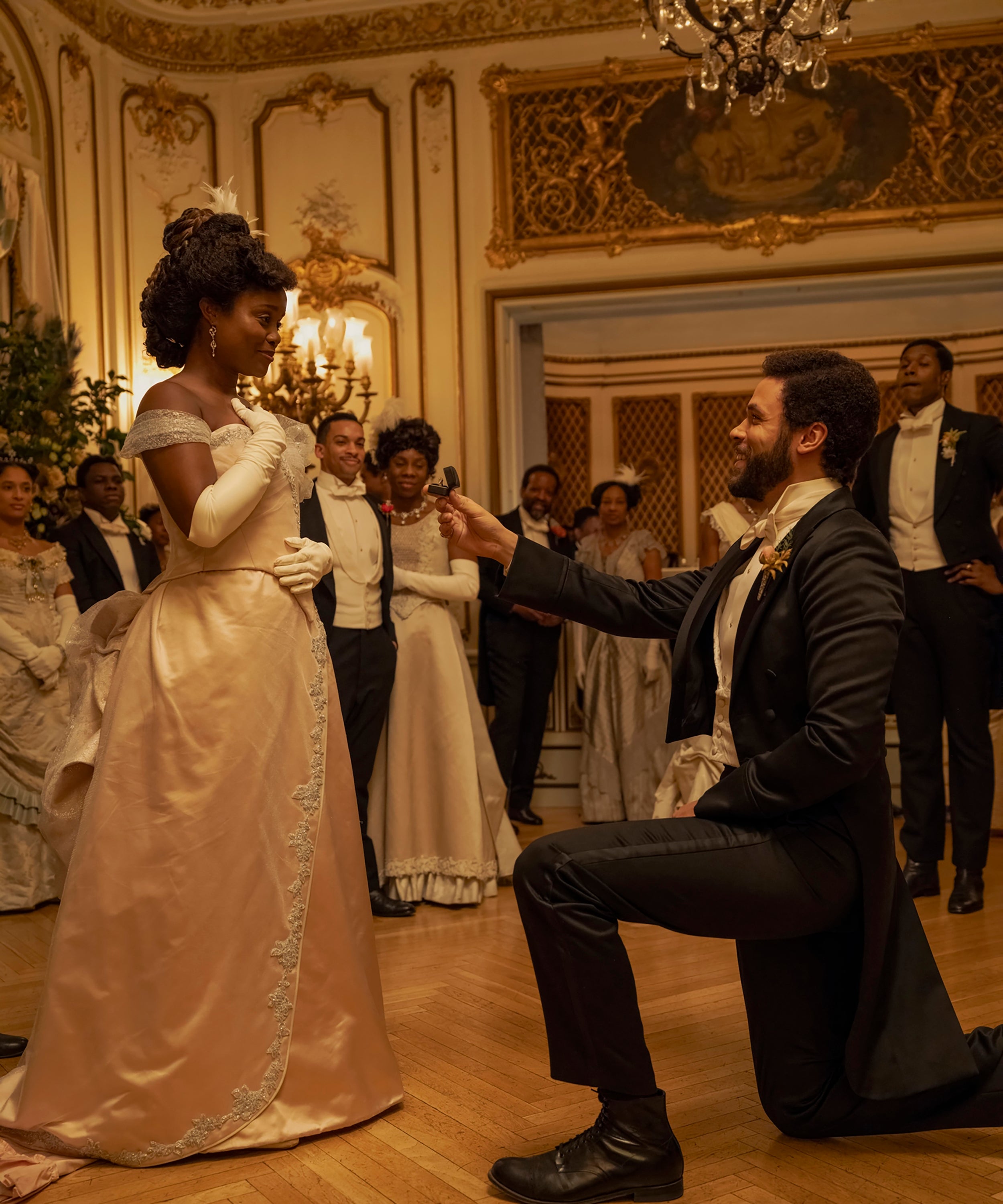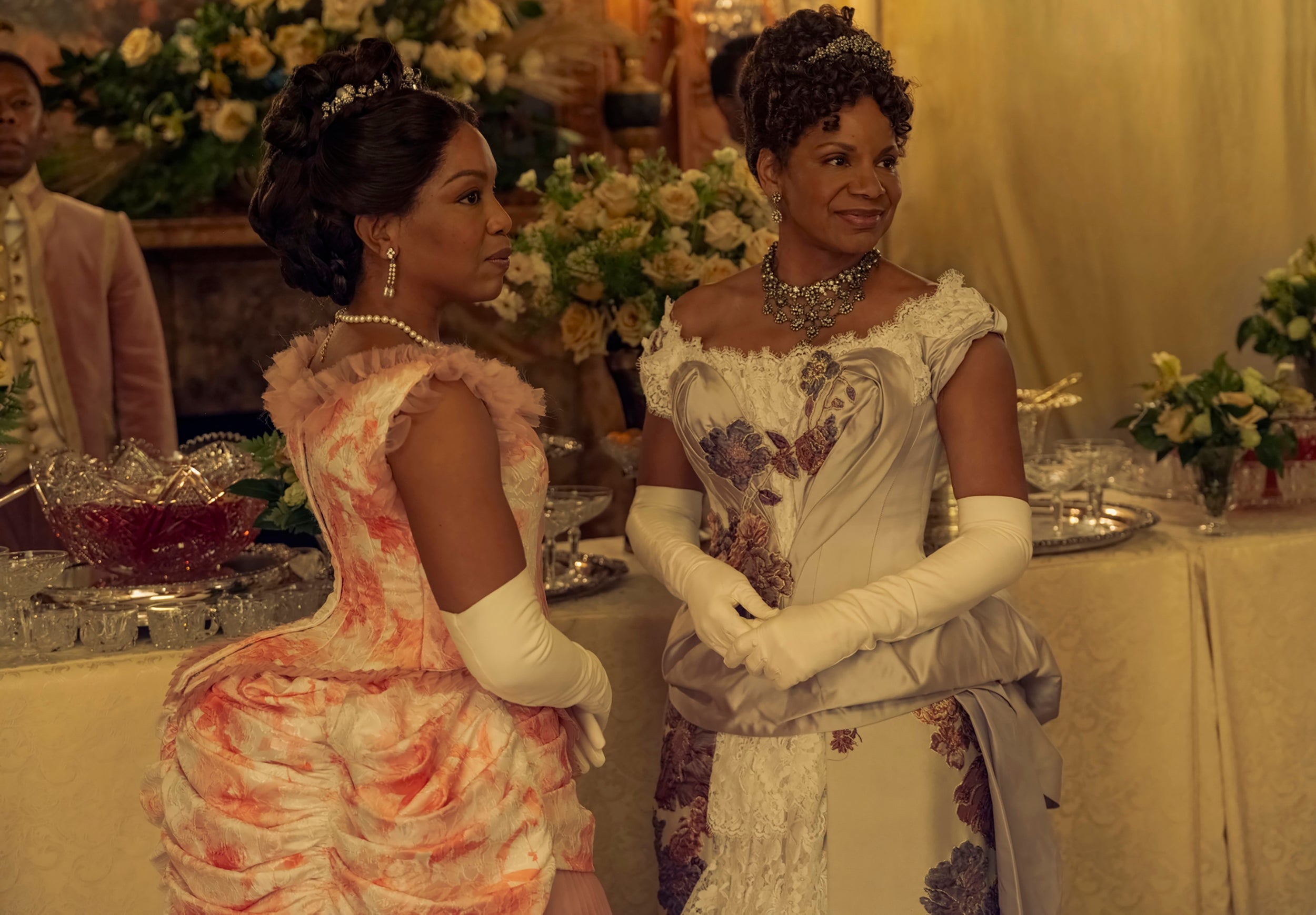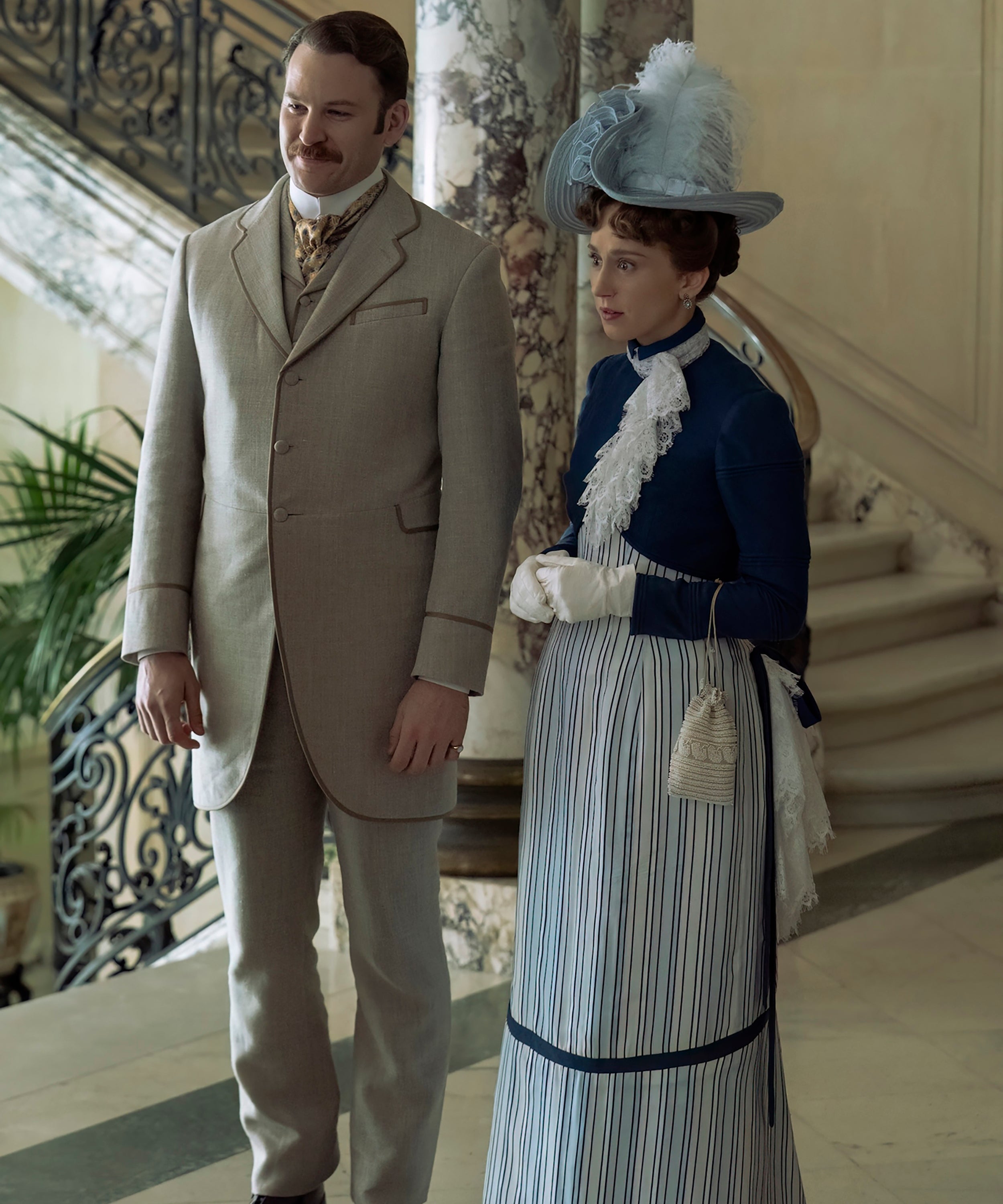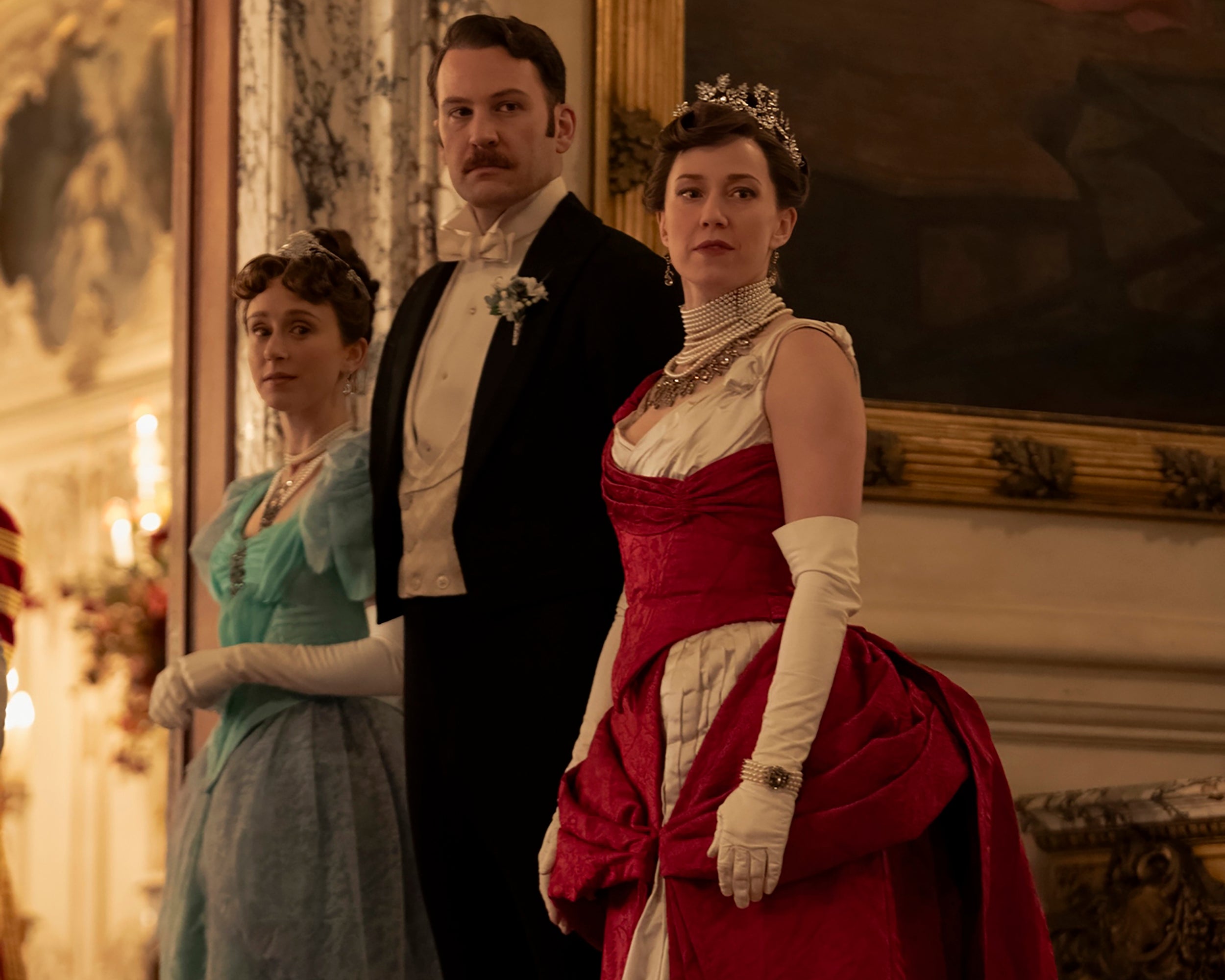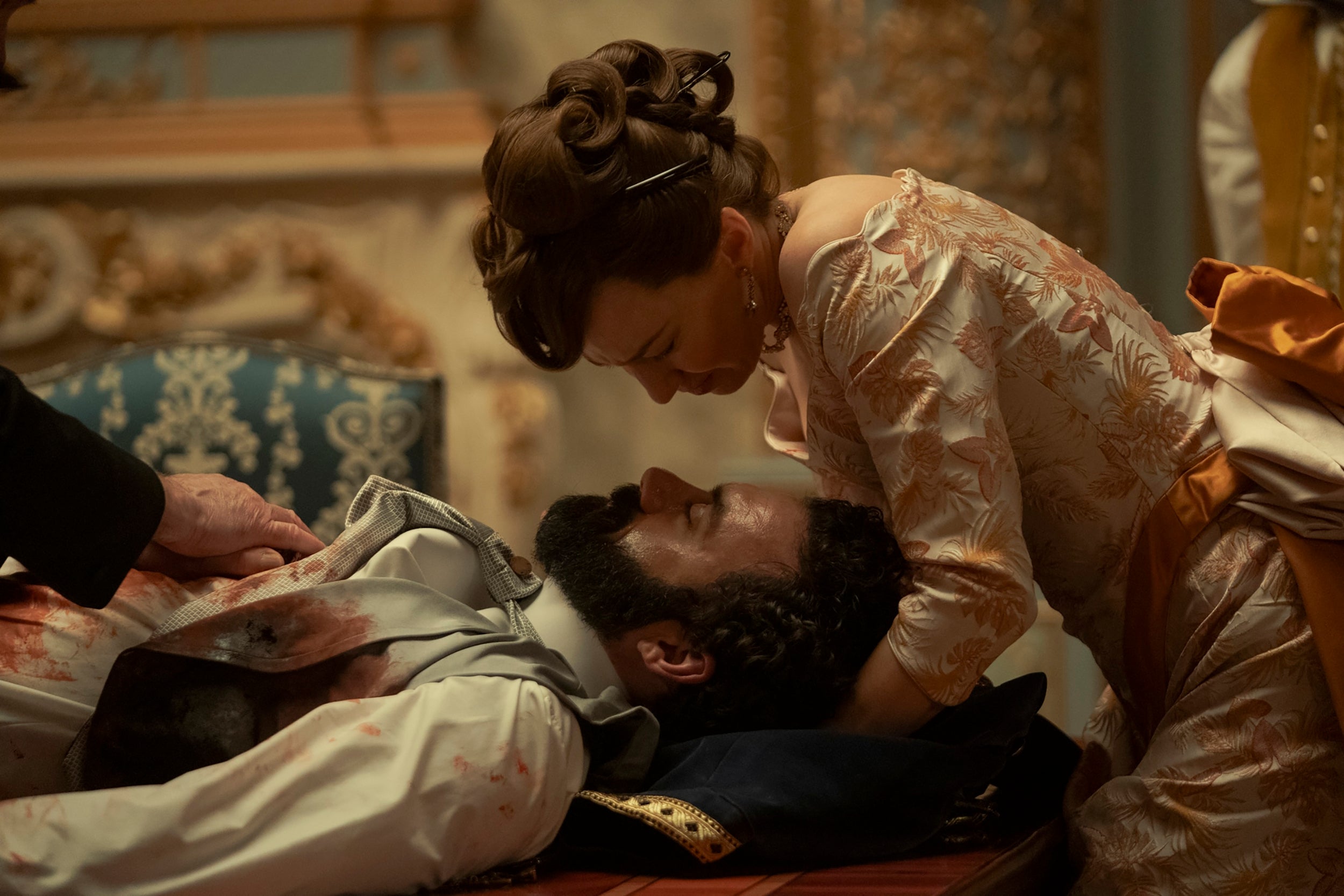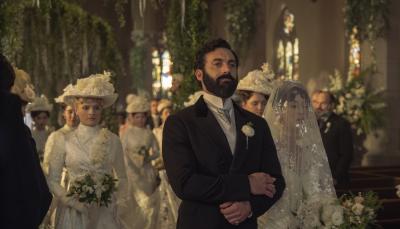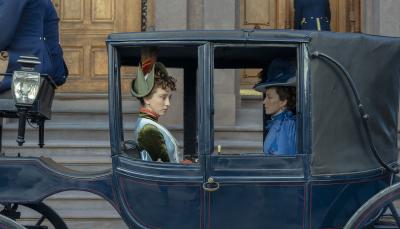Carrie Coon’s Costume Corner: 'The Gilded Age' Season 3 Finale Goes Sartorially Hard
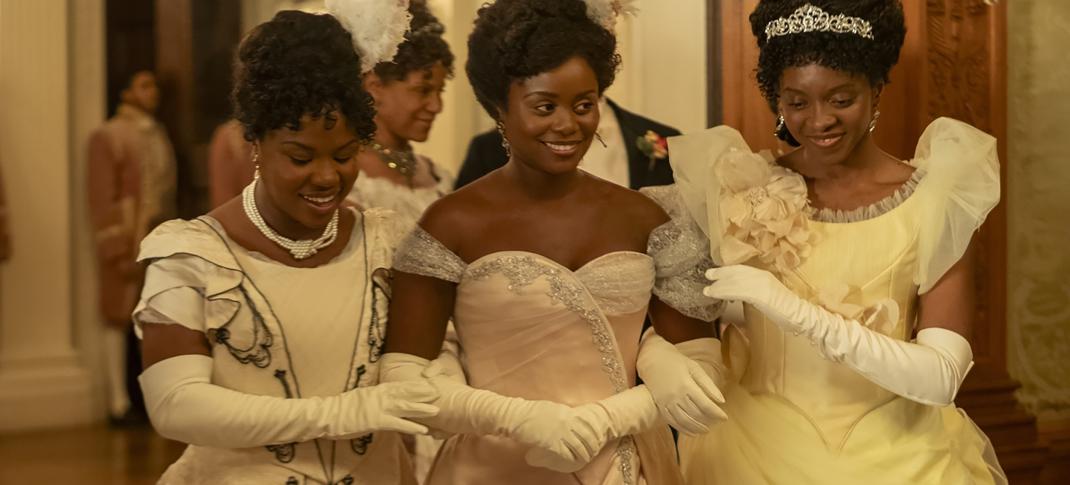
Denee Benton as Peggy Scott in 'The Gilded Age' Season 3
Karolina Wojtasik/HBO
Welcome once again, friends, to Carrie Coon’s Costume Corner, where we look closely at the costume design of The Gilded Age and think out loud about design inspiration, as well as how they reflect and highlight various character relationships. It's been one of this site's guilty pleasures, and we thank you for coming along for the ride this season.
(Season 4 has been greenlit, but it most likely won't be out until 2027. If we're still trucking along then, we'll try to be back.)
The costumes for Carrie Coon’s character, the brilliant social schemer Bertha Russell, haven’t been the main focus for this season, perhaps because, having vanquished Mrs. Astor in The Opera Wars, she’s been focused on marrying her daughter Gladys off to the Duke of Buckingham. Old money doesn’t care all that much for novelty, and besides, they needed as much money as possible to meet the massive dowry Hector negotiated with George Russell. You can forgive Bertha for deciding that if a thing was worth wearing, it was worth wearing twice.
In the third season’s finale, we are treated to a group of gowns so collectively dreamy that watching them whirl around made me feel like I was in a heavenly cloud of meringues (complimentary), sartorial callbacks to previous episodes, and tons of character development through clothes. My fellow tricksters and demimondaines, let’s go!
Peggy Scott, Winner of the Season
This season, The Gilded Age’s storylines about life among the Black upper middle class during this period have finally kicked into the high gear they’ve always deserved, and Peggy herself has continued to come into her own professionally and personally. Nearly every episode included a scene or two that made me yell some variation of “yay, Peggy!!” She’s a gifted writer, a principled friend, and is thriving in her relationships with her parents and the courtly (but not too starchy) Dr. Kirkland. She has found a love that sees and celebrates all facets of who she is.
Their sincere and heart-wrenching conversation about Peggy’s tragic past experiences was deeply affecting, making their joyful public proposal at the ball, which Dr. Kirkland himself was hosting, all the sweeter and more satisfying. The color palette in general and the women’s gowns in particular at the Kirkland Ball contribute to the romance of the scene. The dancers waltzing around the ballroom form a sea of whirling, luscious pastels, all bathed in the flattering glow of the scene’s soft lighting. Peggy herself looks like a princess in her off-the-shoulder gown in palest seashell pink.
The gown’s fit isn’t as precise or flattering as the dresses we usually see her in, but the color is lovely, and she looks radiant. Luminous, even! Congratulations and best wishes to the future Dr. & Mrs. Kirkland!
Over at the Newport Ball—hosted by Bertha Russell and offering increased fanciness thanks to the presence of her son-in-law and daughter, the Duke and Duchess of Buckingham—the lighting is once again flattering, and I note that the overall color palette leans into darker colors than the Kirkland Ball. The crowd is a sea of jewel tones and deep shades of blue, green, and red.
Her Grace Gladys is the one notable exception, in a pale turquoise gown. This makes perfect sense to me as she’s coming into her own quite beautifully over in England, but is still among the youngest attendees at the ball. Her gown very neatly emphasizes both her station and her youth.
Gladys Grows Up & Into Her Station
Ever since Bertha sailed over to England and took Sidmouth Castle by storm, Gladys has been on an upswing. Her mother’s shrewd tutelage and pep talks have guided Gladys to asserting her rightful authority as duchess and establishing so much common ground with Hector that they now seem blissfully happy. The one cloud in their blue sky, the very reasonable worry over George’s condition on their steamship journey to New York, is alleviated almost at once, thanks to Dr. Kirkland’s exceptional competence.
Gladys isn’t nearly the fashion plate that her mother is, but she’s also still a literal teenager. There’s time for her to develop her eye and figure out how to select dresses and gowns that will send the messages that are important to her. In the meantime, I noted with some distant cousinly feelings of pride in the shifts she’s test-driving so far. These primarily take the form of plaid accents in sober shades like navy and maroon.
However, the dress Gladys wears when she and Hector arrive at her parents’ pile in Newport includes a detail that made me think she’s been paying close attention all along to what her mother wears. The dark blue travel jacket she’s wearing over the dress is festooned with a jaunty diagonal swoop of ivory lace from the neck to the waist, which is a classic from Bertha’s repertoire, particularly when visiting Newport.
In the End, It Is Always All About Bertha
Speaking of Bertha, she’s had quite a series of struggles and opportunities for greatness land in her lap lately, and the season finale sees the most intense versions of both experiences unfold. Naturally, what she’s wearing in each instance is significant. This is not a woman who wakes up each morning wondering about what she’ll wear; she’s never heard of winging it, and if she did, she would surely disapprove.
Two of the dresses she wears during George’s recuperation in New York and Newport are reruns from last season. In New York, she dons the Gracious Luncheon Hostess dress she wore to host the union leader from Pittsburgh, whom George had invited to lunch. The sober shade of dark teal, high collar, long sleeves, and restrained embellishments are all reassuring and serious, a type of matronly armor.
In Newport, she reprises the airy elegance of Almost Casual Bertha the day before the ball, which is a great warm-up to her queenly Newport Ball Hostess Return to Form.
Here we have, at last, more of the exuberance and daring that her costumes have pulled back from this season. The scarlet gown and its dramatic slashes of white, the tiara and not one but two necklaces—a very tall multistrand pearl choker, atop a diamond bib necklace with matching drop earrings—altogether, they’re a proclamation reminding everyone that she’s the queen of New York society.
Bertha’s indisputable triumph and the benefits that accrue to George’s business as a result make George’s abrupt and confusing departure the following morning even more bizarre. Bertha’s in another crisp white dress—a sturdier fabric than the voile she’d worn the day before, featuring some combination of white-on-white appliqué, embroidery, and matelassé quilting—as if to say that this morning marks a fresh start and she welcomes all of the potential of a blank slate. George decides to get back to business in Manhattan right away, missing out on Gladys’s joyful announcement of her pregnancy.
I have to think that his decision-making is impaired by the laudanum he was taking the night before to manage his pain at the ball. I wish Dr. Kirkland had given him a little talking-to about the inadvisability of making big life decisions so soon after a traumatic event. Getting shot was bad enough, but even a healthy person like George needs to understand that surgery, no matter how localized and no matter how smooth the patient’s recovery, is an injury sustained by the entire body.
Here’s hoping he comes to his senses in the first few episodes of Season 4. Larry, you may need to consider organizing an intervention.
All episodes of The Gilded Age Seasons 1 through 3 are streaming on HBO Max. Season 4 is already greenlit, and expected to start production in 2026.

